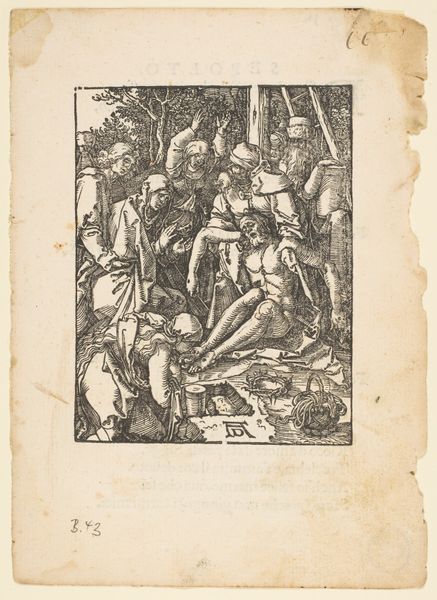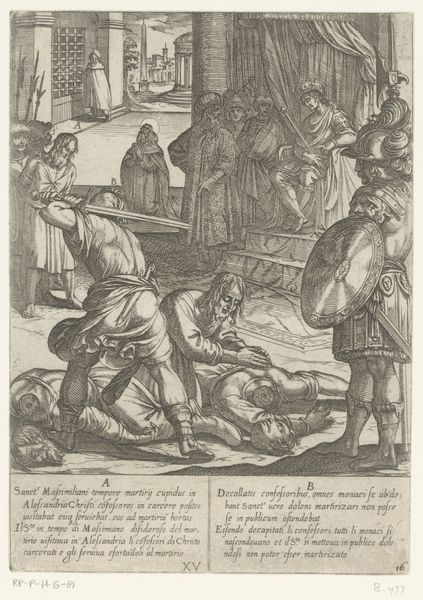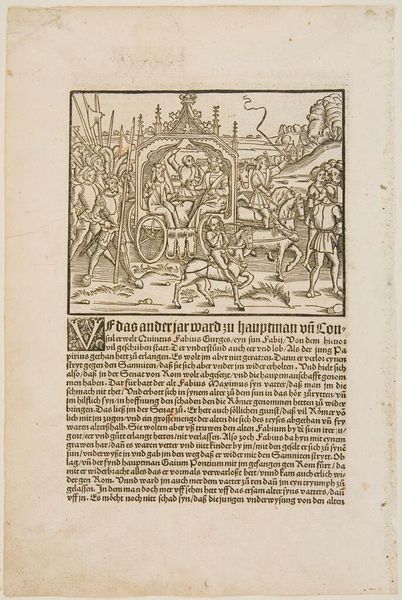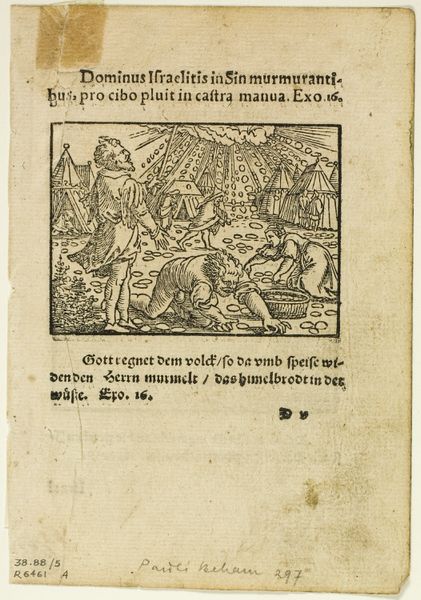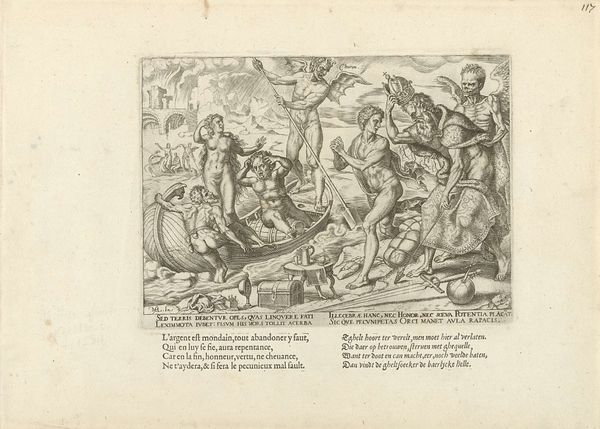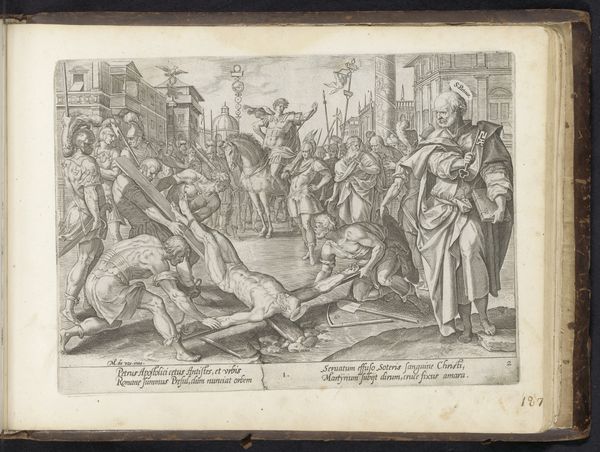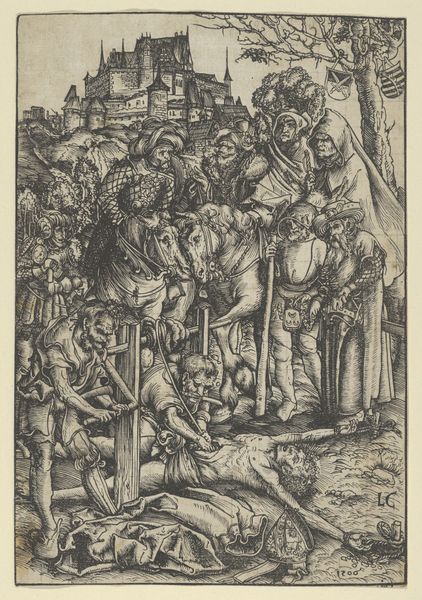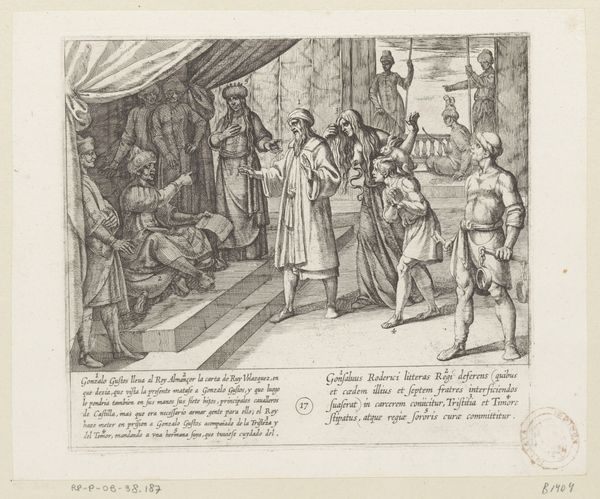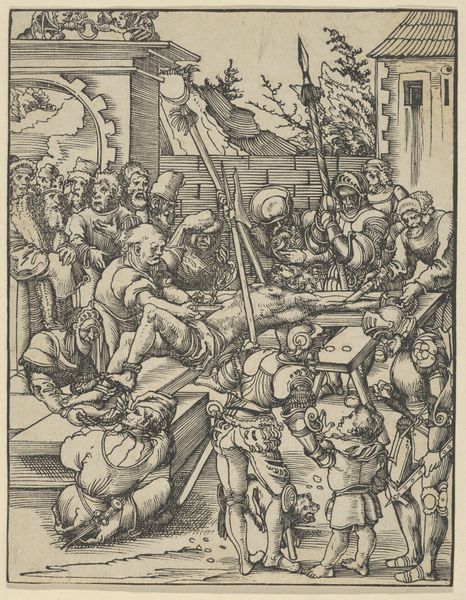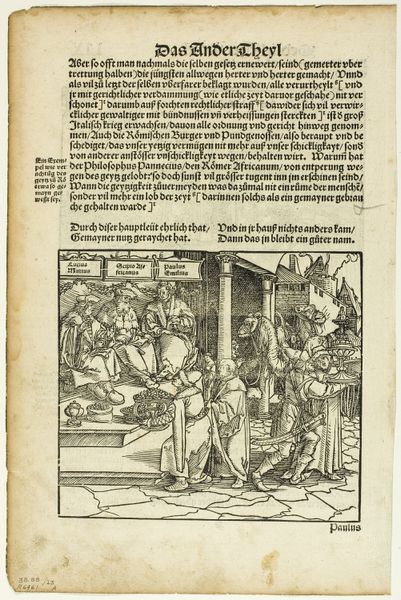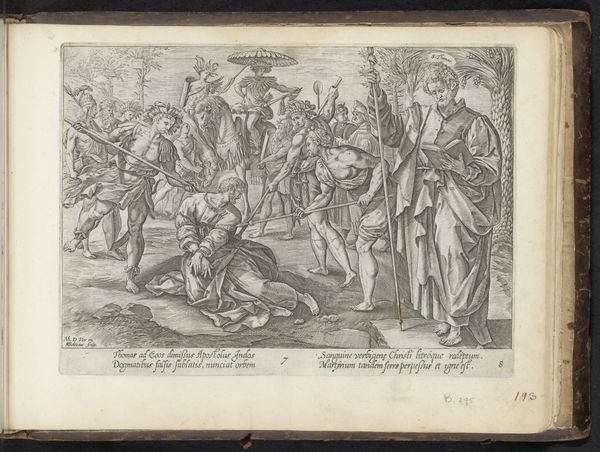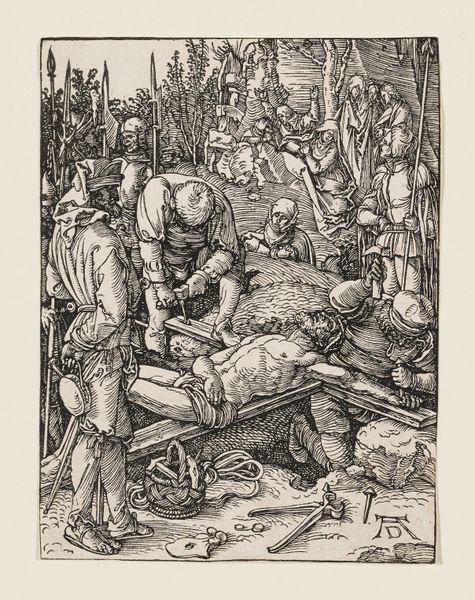
Christ Nailed to The Cross, from "The Small Passion", edition Venice 1612
0:00
0:00
drawing, print, etching, intaglio, engraving
#
drawing
#
medieval
#
narrative-art
# print
#
etching
#
intaglio
#
landscape
#
figuration
#
line
#
crucifixion
#
history-painting
#
northern-renaissance
#
engraving
#
realism
#
christ
Dimensions: sheet: 8 1/16 x 5 13/16 in. (20.5 x 14.7 cm) image: 4 15/16 x 3 13/16 in. (12.6 x 9.7 cm)
Copyright: Public Domain
Editor: This is "Christ Nailed to the Cross, from 'The Small Passion'," an engraving by Albrecht Dürer from 1612. It depicts exactly what the title says; I find the raw depiction quite unsettling. What jumps out to you when you look at this piece? Curator: I see a powerful critique of power structures, cloaked in a biblical scene. Dürer, working during the Reformation, subtly challenges the authority that perpetuates violence. Look at the detail he gives to the Roman soldiers versus the anonymity of the crowd. How do their postures and tools speak to you? Editor: The soldiers do seem much more active and defined. The crowd is... a background. Curator: Exactly. Dürer uses line and composition to highlight the mechanics of oppression. He isn’t simply illustrating the crucifixion, he’s offering a commentary on systemic injustice and the role of institutions in upholding it. Considering the context of religious and social upheaval, can we view this less as a devotional image and more as a politically charged statement about who holds power, and at what cost? Editor: That reframes the entire piece. The nailing isn't just a religious event, but a demonstration of force? Curator: Precisely. Consider, too, the landscape setting – it’s not just a backdrop, but a stage upon which this drama of power unfolds, implicating everyone present. The seemingly objective recording of a biblical event is actually deeply subjective. Does that change how you understand Dürer’s role as an artist? Editor: It does! I came in seeing religious art, but now it looks like Dürer was actively protesting. Curator: By understanding the cultural and historical context, we uncover a richer, more radical layer within this piece. Art invites us to question the narratives we inherit and see the world with new eyes.
Comments
No comments
Be the first to comment and join the conversation on the ultimate creative platform.
